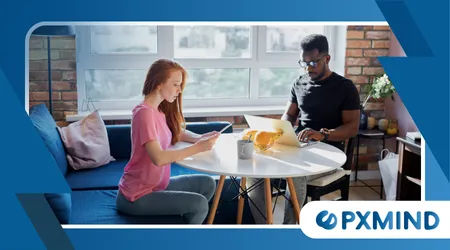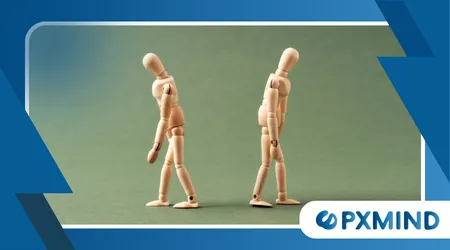The Role of Cognitive Dissonance in Everyday Life

In the complex theatre of human psychology, understanding the Role of Cognitive Dissonance in Everyday Life is paramount.
Anúncios
This mental discomfort, born from conflicting beliefs, values, or actions, profoundly influences how we perceive the world.
It is the internal friction that sparks a powerful psychological drive for resolution. Leon Festinger, a pioneer in social psychology, first introduced this seminal concept in 1957.
Since its inception, the theory has provided a robust framework for dissecting seemingly irrational human behavior.
What is Cognitive Dissonance and Why Does it Matter?
Cognitive Dissonance represents a fundamental human need for psychological consistency.
When people hold two contradictory “cognitions” thoughts, attitudes, or beliefs an uncomfortable tension arises.
This dissonance is not merely disagreement; it is an active state of distress.
Individuals are naturally motivated to reduce this discomfort, often by altering one or both cognitions, or by adding new ones.
How Does This Internal Conflict Manifest?
This internal conflict manifests in subtle yet pervasive ways, guiding our choices from the mundane to the monumental.
Consider the smoker who knows the health risks. The action (smoking) and the belief (smoking is deadly) clash intensely. To alleviate this distress, they might rationalize.
They could minimize the danger (“My grandfather smoked and lived to 90”), or exaggerate the pleasure (“Smoking helps me manage stress so it’s worth the risk”).
How Does Cognitive Dissonance Influence Our Decision-Making Process?
The tension created by dissonance acts as a hidden force in our decision-making. Once a tough choice is made, people tend to inflate the attractiveness of the chosen option and devalue the rejected alternatives. This is known as the spread of alternatives. It is a defense mechanism to confirm the wisdom of our initial choice.
Why Do We Rationalize Our Past Mistakes?
People rationalize past mistakes to preserve their self-image as competent, intelligent decision-makers. This need for internal validation is a primary driver.
We unconsciously revise our memories and justifications to align with the outcome. This ensures that the narrative we tell ourselves about our life remains coherent and positive.
An original example illustrates this perfectly: Imagine someone buys a cutting-edge, expensive new smartphone.
Read more: How the Brain Reacts to Unexpected Rewards
Later, they read reviews highlighting its poor battery life and fragility.
Instead of admitting a flawed purchase, the buyer heavily focuses on its superior camera features and design, completely dismissing the negative aspects.
They might even become a vocal online defender of the phone, aggressively countering critics.

Where Can We Observe the Role of Cognitive Dissonance in Everyday Life?
The Role of Cognitive Dissonance in Everyday Life is observable across multiple domains. It is evident in consumer behavior, political allegiance, and even personal relationships.
++ Why It’s Hard to Say No and How to Do It Anyway
This pervasive influence highlights its importance in the study of social dynamics.
How Does Cognitive Dissonance Affect Consumer Choices?
In the commercial world, dissonance frequently arises post-purchase. Marketers leverage this.
They offer extended warranties and “we’re glad you chose us” messaging to reinforce the customer’s decision.
This is a deliberate strategy to prevent “buyer’s remorse”, which is a direct form of cognitive dissonance.
What is the Link Between Dissonance and Political Polarization?
Political polarization is a fertile ground for dissonance. When confronted with evidence that contradicts their preferred candidate or party, individuals rarely change their minds.
Instead, they employ motivated reasoning. They vigorously seek out information that confirms their existing views (confirmation bias) and dismiss opposing facts as “fake news.”
This minimizes the psychological inconsistency.
See how interesting: How to Learn Complex Topics Without Getting Overwhelmed
Consider this second original example: A person strongly committed to environmental sustainability continues to take long-haul flights frequently for work.
The belief (protect the planet) and the action (high-carbon footprint travel) create dissonance.
To manage this, they might consistently donate to carbon offset programs, buy an electric car for local travel, or over-emphasize other green habits, believing these actions fully negate the flight’s impact.
Why Is Understanding This Concept Crucial for Personal Growth?
Understanding this psychological mechanism is crucial because it offers a path toward more honest self-assessment.
Recognizing when we are rationalizing, rather than reasoning, is the first step toward genuine growth. Acknowledging internal conflict allows for meaningful change.
A compelling for cognitive dissonance is a poorly tuned piano. Each time you strike a chord, the resulting sound is jarring and off-key (the discomfort).
You can’t ignore it. You are immediately motivated to re-tune one or more strings (the cognitions) until the sound becomes harmonious again (the reduction of dissonance).
According to a 2024 review published in Current Opinion in Psychology, meta-analyses confirm that dissonance-reduction processes are more pronounced when a person’s self-concept or sense of morality is threatened.
This powerful link underscores the protective nature of the mechanism.
| Method of Dissonance Reduction | Description | Common Example |
| Changing the Behavior | Stop the action that is inconsistent with the belief. | A heavy drinker stops consuming alcohol after a health scare. |
| Changing the Cognition | Alter the belief to make it consistent with the behavior. | “Moderate drinking is actually beneficial for heart health.” |
| Adding New Cognitions | Introduce new supportive beliefs to bridge the gap. | “I drink because it’s a social lubricant and helps me network professionally.” |
Does this internal psychological “spin doctor” ever truly allow us to see the world objectively?

The Pervasive Role of Cognitive Dissonance in Everyday Life
The Role of Cognitive Dissonance in Everyday Life is inescapable. It is a powerful, often subconscious engine that dictates not only our choices but also the stories we construct about ourselves.
Recognizing this psychological defense system gives us leverage.
By monitoring our self-justifications and rationalizations, we can move from being unconsciously driven by dissonance to becoming conscious architects of our beliefs and behaviors.
This awareness leads to better decision-making and genuine personal integrity.
Frequently Asked Questions
What is the difference between cognitive dissonance and simple regret?
Cognitive Dissonance is the internal tension arising from holding conflicting thoughts or from a conflict between a thought and an action. It is a motivating state to reduce inconsistency.
Simple Regret is a negative emotion experienced after a decision is made, acknowledging a desired alternative outcome. Dissonance often causes the need to rationalize away regret.
Can cognitive dissonance be a positive force?
Yes, in certain contexts. Dissonance can be used constructively. For example, therapists often use “induced compliance” techniques, encouraging a small behavior change that conflicts with a negative belief.
The resulting dissonance motivates the client to change their underlying belief to align with the new, positive action, thereby reducing the mental tension and leading to genuine change.
++ The Power of Cognitive Dissonance in Shaping Attitudes and Behaviors
